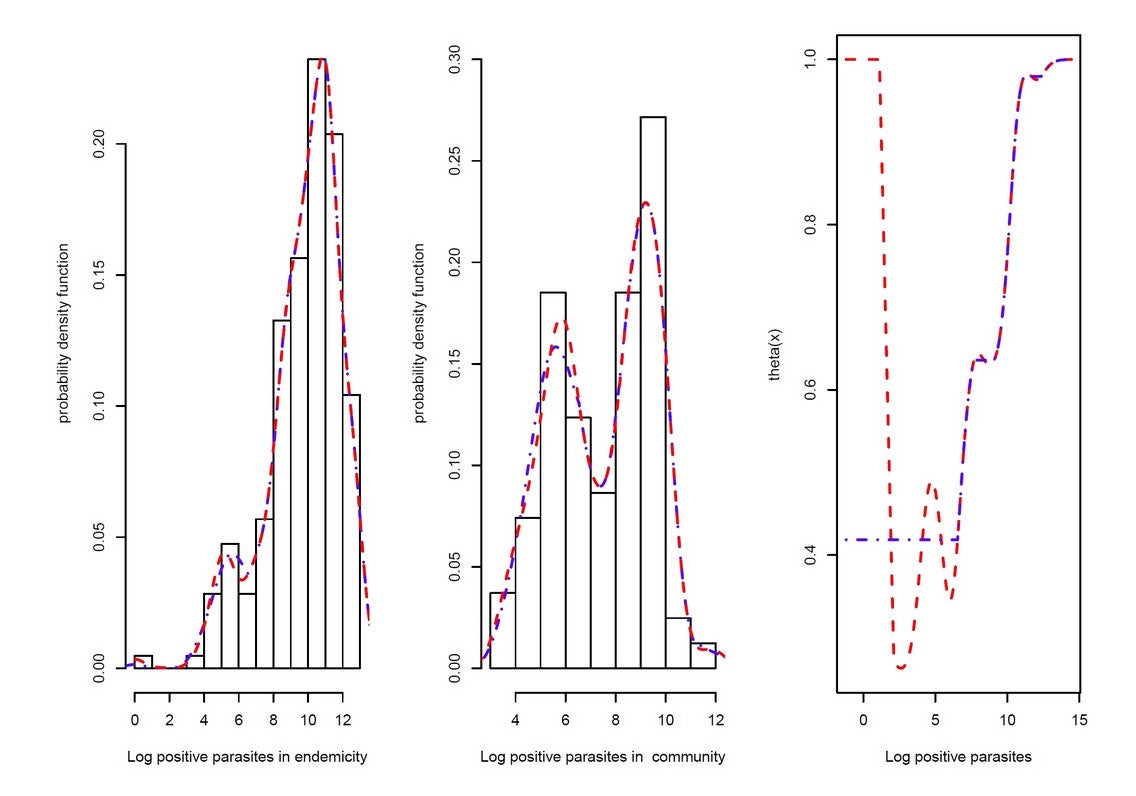Statistical inferences with monotone density ratio
YU Tao ((Group Leader, Statistics and Applied Probability) ) February 16, 201716 Feb 2017. NUS mathematicians have developed effective methods for modelling real-life problems with monotone density ratio conditions.
Statistical modelling with monotone density ratio condition falls under the statistical field of shape constraint inference. This has been a popular and important field in the statistical community for decades. Prof YU Tao from the Department of Statistics and Applied Probability, NUS and his collaborators have developed a smoothed likelihood method to more accurately estimate the probability density functions in a two-sample problem where the ratio of the densities is monotone (mathematical function in which all the data points are either non-increasing or non-decreasing). A two-sample problem means that there are two distinct groups of observations (data points) with each group corresponding to a given population. One can think of the observations of one group as the medical test results of diseased patients, and those of the other group as the medical test results of healthy people. This statistical problem is widely known in the literature and occurs frequently in practice. The findings by Prof Yu and his collaborators are the first work to provide effective solutions for estimating continuous probability density functions for such problems which can be used in a wide range of applications.
Monotone density ratio is a very powerful statistical tool which can be used for combining different medical tests (called biomarkers) for diagnostic purposes. Within the framework of the two-sample problem, the observation for each subject could be multidimensional. This means that it can comprise multiple parameters, such as the patient’s blood pressure, body weight, smoking history, etc. This method is able to combine the test results together into a univariate variable (single parameter), so that it becomes easier for doctors to make appropriate medical diagnoses. Also, these density estimates can be used to predict the likelihood of a subject being a diseased or healthy patient, given the results of his/her medical tests.
There are many interesting and important problems in this area awaiting future research. This could take the form of combining different techniques to achieve more accurate results, such as incorporating smoothing techniques (from reference 2) into the method developed in reference 1. The statistical methods which have been developed can also be extended to real-life scenarios, such as the mixture sample problem in which information is only partially available on whether the subject is diseased or healthy.

Figure 1 shows the application of the method proposed in Yu et al. (forthcoming) to a real- world example using malaria data. The right panel shows that this new method by Prof Yu’s team is able to satisfy the monotone density ratio condition but the other method is not able to. Left panel: density estimates of log transformed parasite levels of malaria patients; middle panel: density estimates of log transformed parasite levels of non-malaria patients; right panel: transformed density ratios. Blue curve: method by Yu et al.; red curve: some other method without monotone density ratio constraint.
References
1. Chen BJ; Li PF; Qin J; Yu T, “Using a Monotonic Density Ratio Model to Find the Asymptotically Optimal Combination of Multiple Diagnostic Tests” JOURNAL OF THE AMERICAN STATISTICAL ASSOCIATION Volume: 111 Issue: 514 Pages: 861-874 DOI: 10.1080/01621459.2015.1066681 Published: 2016
2. Yu T; Li P; Qin J, “Density estimation in the two-sample problem with likelihood ratio ordering” BIOMETRIKA, accepted.


